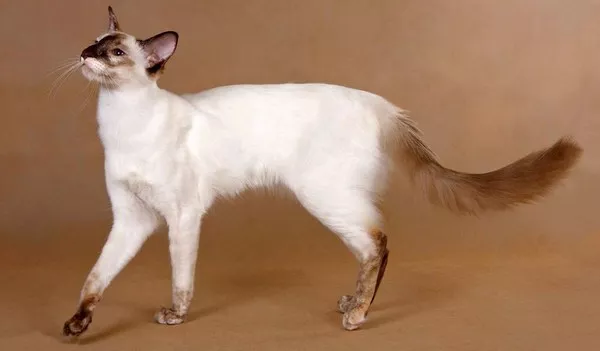Welcoming a kitten into your home is an exciting experience, and ensuring their well-being becomes a top priority. While adult cats are known for their fastidious grooming habits, young kittens may require a little help in the hygiene department. Bathing a 1-month-old kitten is a delicate task that requires careful consideration of their unique needs and developmental stage. In this comprehensive guide, we will explore the reasons for bathing young kittens, the appropriate methods, and essential tips to make the experience positive for both you and your tiny feline companion.
Understanding the Need for Bathing
Maternal Grooming vs. Human Assistance:
In the wild, a mother cat plays a crucial role in grooming her kittens. Her tongue acts as a brush, cleaning and stimulating circulation. However, domesticated kittens may not always receive the same level of grooming from their mother, especially if they are orphaned or separated at an early age. In such cases, human assistance may be necessary to ensure proper hygiene.
Removing Residue:
At one month old, kittens are still learning to navigate their environment, and accidents can happen. They may come into contact with substances that are challenging to clean through self-grooming alone. Bathing becomes a solution to remove any unwanted residues, such as food or dirt, from their fur.
Health and Wellness:
Maintaining a clean and healthy coat is essential for a kitten’s overall well-being. Regular grooming, including baths, helps prevent skin issues, matting, and the accumulation of harmful parasites. By establishing a positive bathing routine early on, you set the foundation for a lifetime of good grooming habits.
Preparing for the Bath
Gather Necessary Supplies:
Before beginning the bathing process, assemble all the supplies you’ll need. This includes a mild kitten shampoo, a towel, a gentle brush, and a shallow basin or sink. Make sure the room is warm and draft-free to prevent the kitten from getting chilled.
Choose the Right Shampoo:
Selecting an appropriate shampoo is crucial when bathing a 1-month-old kitten. Use a specially formulated kitten shampoo that is mild, hypoallergenic, and free from harsh chemicals. Avoid using human shampoos or those designed for adult cats, as they may be too harsh for a kitten’s delicate skin.
Trim Claws (Optional):
While not mandatory, trimming the kitten’s claws before the bath can reduce the risk of accidental scratches. Use a pair of cat nail clippers, and be cautious not to cut too close to the quick. If you’re unsure, consult with your veterinarian or a professional groomer for guidance on nail trimming.
Positive Reinforcement:
Create a positive environment for the kitten by offering treats, gentle strokes, and soothing words. Familiarize them with the bath area before starting the process. This helps build trust and makes the experience less stressful.
Bathing Steps
Pre-Bath Brushing:
Begin by gently brushing the kitten’s fur to remove any loose hair or tangles. This not only helps keep the coat clean but also prevents matting during the bath. Use a soft brush designed for kittens, avoiding any brushes with sharp bristles that may irritate their sensitive skin.
Fill the Basin or Sink:
Fill the basin or sink with a few inches of warm (not hot) water. The water level should be shallow enough to keep the kitten’s head above water. Test the water temperature with your wrist to ensure it’s comfortable, similar to what you would do for a human baby.
Introduce the Kitten to Water:
Gently place the kitten in the water, supporting their body with one hand while using the other hand to wet their fur. Begin with the body, avoiding the head and face initially. Gradually introduce water to the entire body, ensuring a calm and gradual process.
Apply Kitten Shampoo:
Once the kitten is wet, apply a small amount of the specially formulated kitten shampoo. Use your hands to create a gentle lather, being cautious around the face and eyes. Focus on areas that may have accumulated dirt or residue.
Rinse Thoroughly:
Rinse the kitten thoroughly with clean, warm water. Ensure all shampoo is completely washed out to prevent skin irritation. Use a cup or your hands to pour water over the kitten, avoiding the use of a showerhead or spray nozzle, which may be too harsh.
Dry the Kitten:
Lift the kitten from the water and place them on a towel. Gently pat them dry, avoiding vigorous rubbing that may cause stress or tangle their fur. Ensure the room is warm, and provide a cozy, dry space for the kitten to rest and finish drying naturally.
Post-Bath Care
Brushing and Grooming:
Once the kitten is fully dry, resume brushing to ensure their coat remains smooth and free of tangles. Use a gentle brush to prevent any discomfort or pulling on the delicate kitten fur.
Positive Reinforcement:
Reward the kitten with treats, praise, and affection after the bath. This positive reinforcement helps associate the bathing experience with positive feelings, making future baths more manageable.
Monitor for Stress:
Keep a close eye on the kitten for signs of stress or discomfort. If the kitten appears excessively agitated or exhibits abnormal behavior, consult with your veterinarian for guidance on adjusting the bathing routine.
Establishing Routine:
Consistency is key when introducing a kitten to bathing. Establishing a regular grooming routine, including periodic baths, helps the kitten become more accustomed to the process over time. This routine can contribute to a healthier coat and a more comfortable grooming experience for both you and your feline companion.
Common Concerns and Troubleshooting
Crying or Distress:
Some kittens may vocalize or show signs of distress during their first few baths. This is normal, and with patience and positive reinforcement, most kittens adapt to the process over time. If distress persists, consult with your veterinarian for additional tips or support.
Residue in Eyes or Ears:
Be cautious when washing the face, ears, and head to prevent water and shampoo from entering the kitten’s eyes and ears. If accidental entry occurs, gently wipe the area with a damp, clean cloth.
Allergic Reactions:
Monitor the kitten for any signs of allergic reactions to the shampoo, such as redness, itching, or swelling. If these symptoms occur, discontinue use of the shampoo and consult with your veterinarian for alternative options.
Dry Skin or Flakiness:
If the kitten develops dry skin or flakiness after a bath, consider adjusting the bathing frequency and using a kitten-specific moisturizing shampoo. If the issue persists, consult with your veterinarian to rule out underlying skin conditions.
See Also: Giving Kittens Their First Bath: Right Age & Bathing Process
Conclusion
Bathing a 1-month-old kitten requires a gentle and patient approach, considering their small size and delicate skin. By understanding the reasons for bathing, preparing adequately, and following a step-by-step bathing process, you can ensure a positive experience for both you and your feline companion.
Establishing a grooming routine early in a kitten’s life sets the stage for a lifetime of good hygiene habits. Through positive reinforcement, patience, and consistency, you can create a positive association with bathing, making it a manageable and stress-free experience for your growing kitten. Always monitor your kitten’s behavior and consult with your veterinarian for personalized guidance, ensuring that their unique needs are met throughout their developmental stages.



























